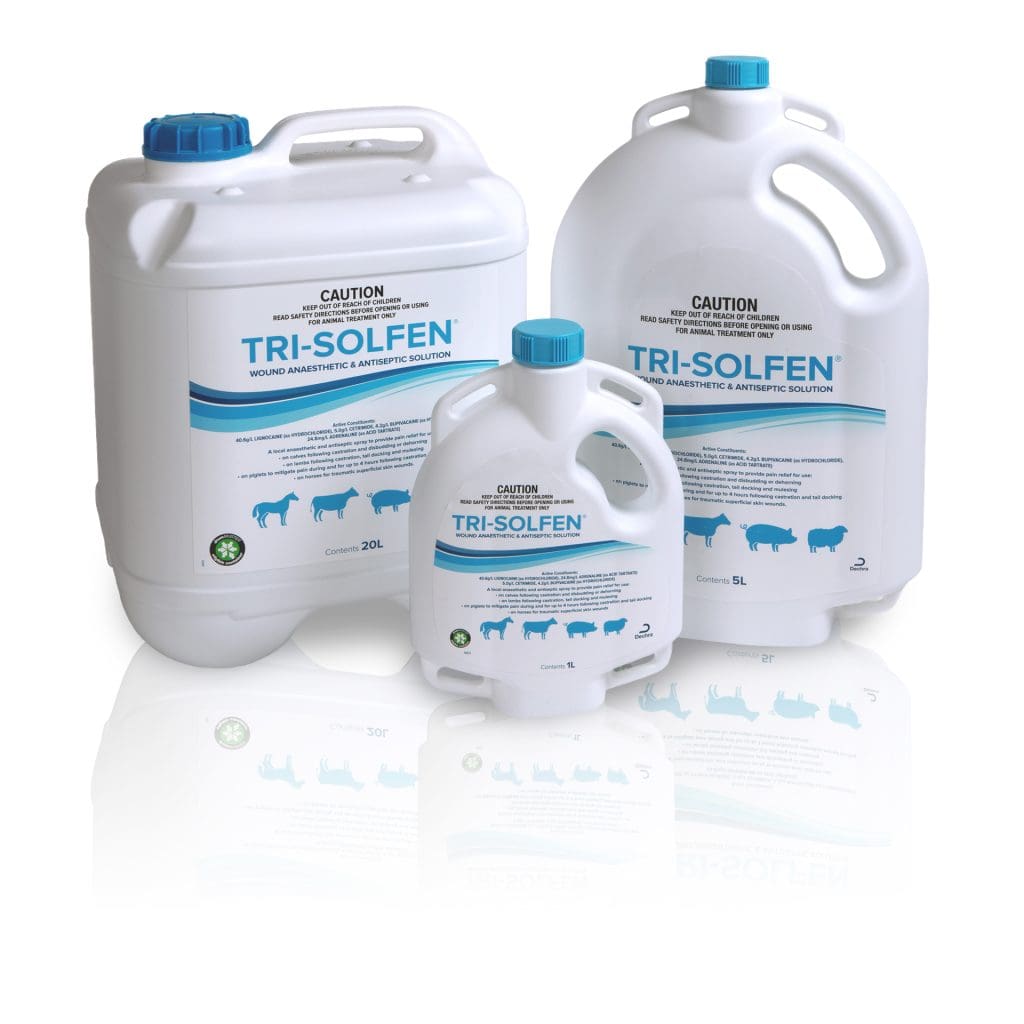DISBUDDING, dehorning, castration and other animal husbandry procedures are necessary to improve animal welfare, livestock management and productivity. Until recent years, these procedures have often been performed without any form of pain relief.
Providing pain relief during surgical animal husbandry procedures is a better choice for your livestock, your business and your industry as a whole. Consumers are increasingly demanding food and fibre that have been produced in accordance with their expectations for animal welfare and sustainability. Providing pain relief helps all sectors of the livestock industry to meet these expectations and protect the long-term ‘social licence’ of our industry.
Australian Animal Welfare Standards and key industry organisations, including Meat & Livestock Australia, Beef Sustainability Framework and Animal Health Australia, advocate the provision of pain relief during disbudding, dehorning and castration.1-3
Widespread adoption
There has been widespread adoption of the provision of pain relief during surgical procedures in beef and dairy cattle over the past decade. Nearly a third of beef producers in Australia routinely provide pain during surgical animal husbandry procedures, particularly during disbudding and dehorning, but less so during spaying and castration.2 Combined, these producers account for about 40% of the national herd.
The Australian beef industry is committed to the development and adoption of stress-free alternatives to surgical animal husbandry procedures. Until practical and cost-effective alternatives are available, the industry aspires to 100% adoption of pain relief for these procedures by 2030.3
Animals experience acute (fast) and chronic (slow) pain during and after animal husbandry procedures. This pain can be alleviated via the administration of anaesthetic or analgesic products. In general, local anaesthetics provide rapid relief from acute pain but are short-acting. NSAIDs provide longer relief from chronic pain but are less effective in relieving acute pain.
Anaesthesia refers to loss of physical sensation with or without loss of consciousness. Local anaesthetics, such as Tri Solfen®, reduce or eliminate pain by blocking the nerve signals from damaged tissue that are responsible for the sensation of pain. Examples include lignocaine and bupivacaine, which are commonly used to provide pain relief in humans. Lignocaine provides immediate (within 60 seconds) pain relief on surgical wounds. Bupivacaine provides longer-acting pain relief on surgical wounds.
Analgesia refers to pain relief without total loss of feeling or consciousness. Common analgesic products include Non-Steroidal Anti-Inflammatory Drugs (NSAIDs), which block the synthesis of prostaglandins that cause inflammation, swelling and pain. They are typically used to reduce inflammation, pain and fever in humans. NSAIDs take 15–30 minutes2 to take effect and can provide pain relief for 24–72 hours.4 Examples include Butec® OTM paste and various Meloxicam injectable formulations.
Multi-modal programs
Best practice guidelines recommend the provision of acute AND chronic pain relief (i.e. multi-modal programs) during disbudding, dehorning and castration.1,2 Ideally, this should involve the administration of an anaesthetic to manage acute pain and an analgesic to manage chronic pain.
There are practical and economic limitations to implementing best practice pain relief programs. For example, some products must be prescribed and administered by a veterinarian, which may not always be feasible. Likewise, there is currently no practical option to address acute pain following ring castration in cattle.
In most situations, best practice pain relief during and after surgical procedures in calves will involve the concurrent use of Tri-Solfen plus an Analgesic (e.g. Butec OTM paste, available from rural suppliers and Meloxicam Injectable available from Veterinarians).
Tri-Solfen is the first choice for acute and lasting pain relief (up to 24 hours) following surgical procedures (e.g. disbudding, dehorning and castration) in calves. Non-steroidal anti-inflammatory drugs (e.g. Buccalgesic, Meloxicam) provide chronic pain relief. Tri-Solfen and Meloxicam/Buccal formulations are available from your rural supplier or veterinarian.
Want to know more?
For more information about how Tri-Solfen helps to deliver Gold Standard pain relief during surgical procedures, click here to access the Dechra website page, or contact your Dechra territory manager, rural reseller or veterinarian:
Candice Cottrell, Territory Sales Manager – Farm Animal (Qld) 0456 881 335
Peter Beard, Territory Sales Manager – Farm Animal (WA & NT) 0456 866 174
References: 1. Australian Animal Welfare Standards and Guidelines (2014). 2. Meat & Livestock Australia (2020). Fact sheet – Pain mitigation in sheep and cattle. 3. Annual update (2024). Australian Beef Sustainability Framework. Sustainability report (2023). 4. Colditz, I. et al. (2019). Efficacy of meloxicam in a pain model in sheep. Aust Vet J. 97:23-32
®Tri-Solfen is a registered trademark of Animal Ethics Pty Ltd. ®Registered trademarks. ©Dechra Veterinary Products (Australia) Pty Ltd, 2024. DEC25017.
Peter Beard, Territory Manager – Farm Animals (WA & NT), Dechra Veterinary Products

